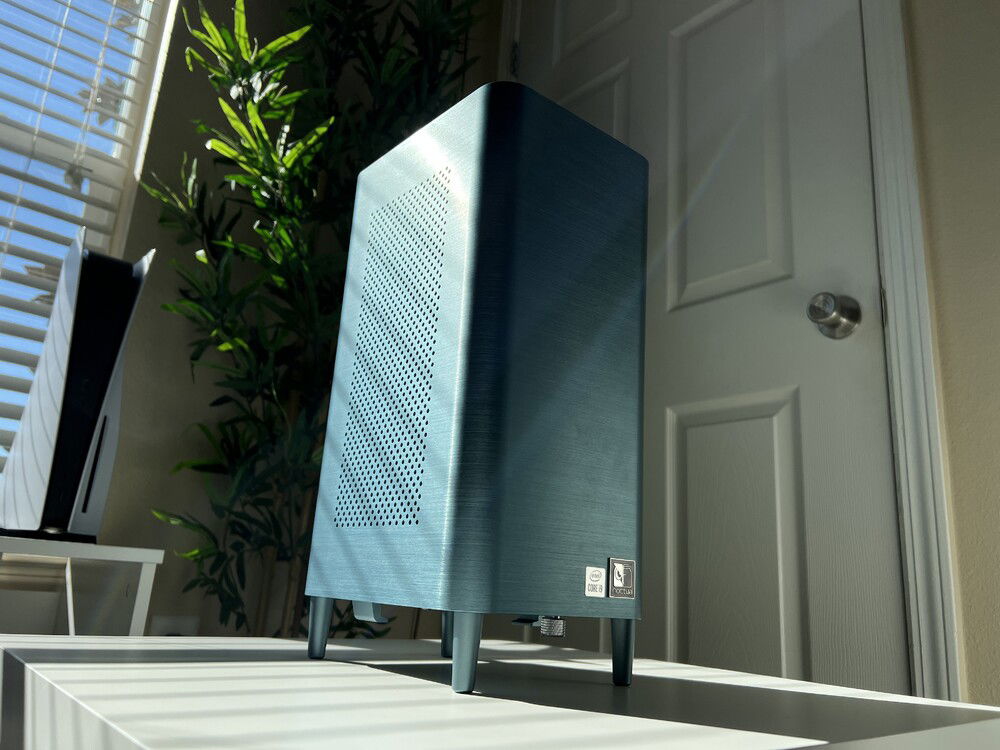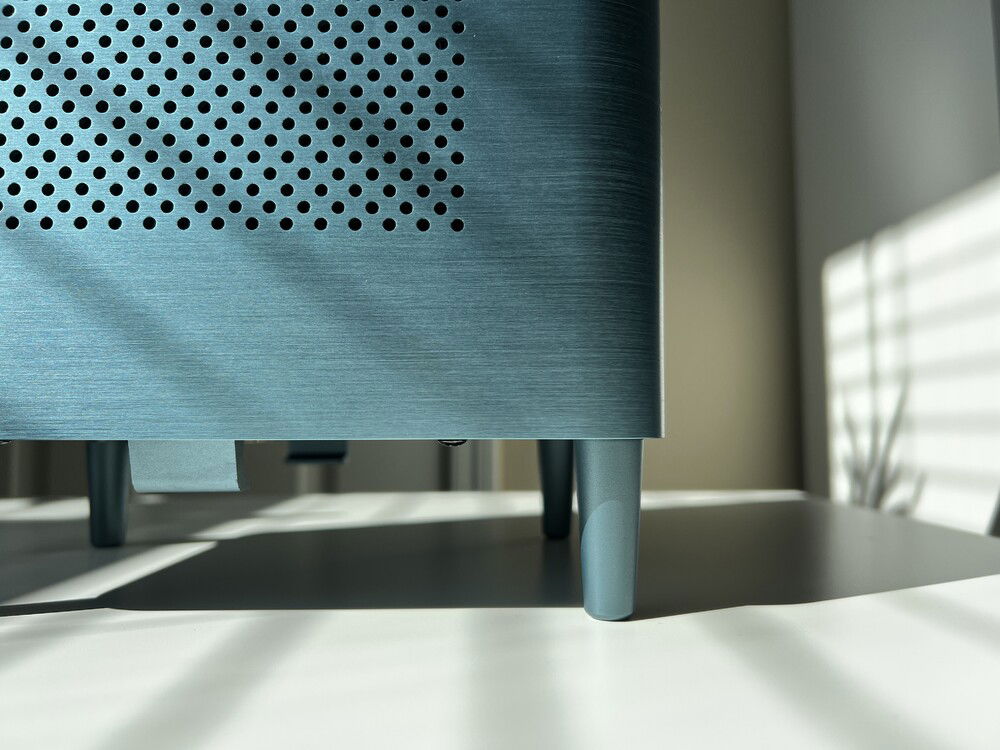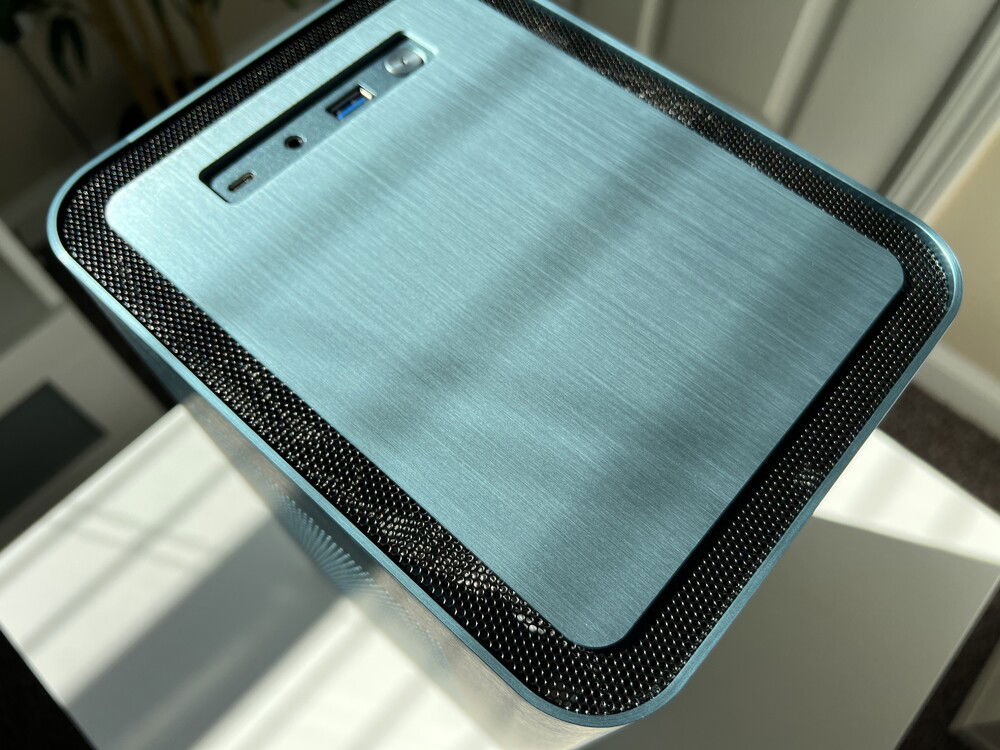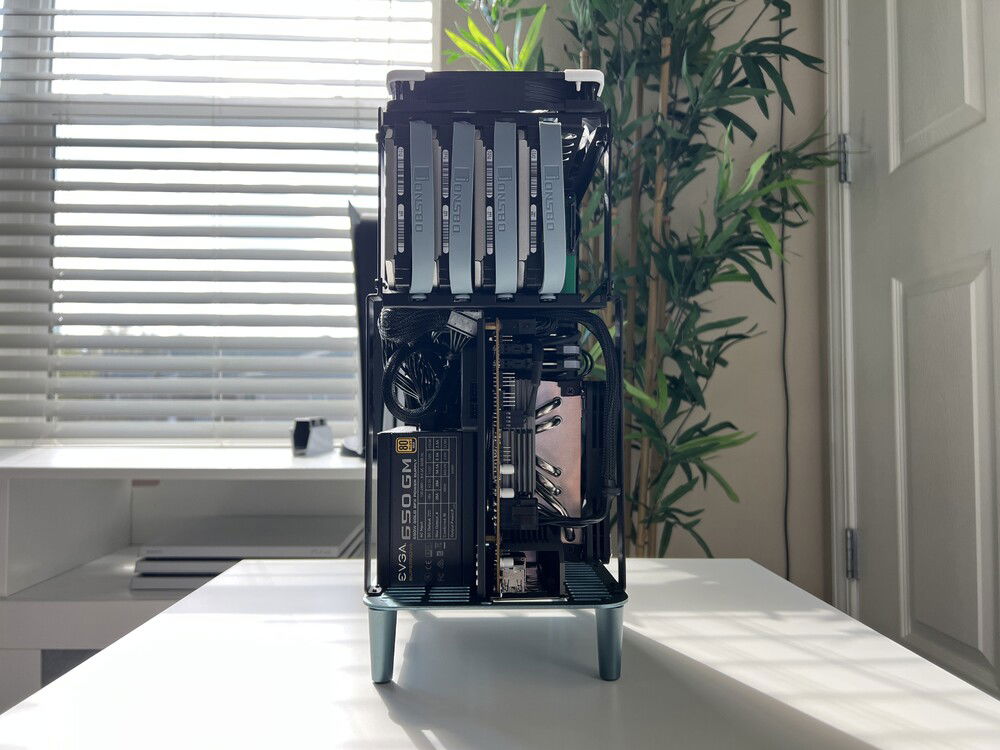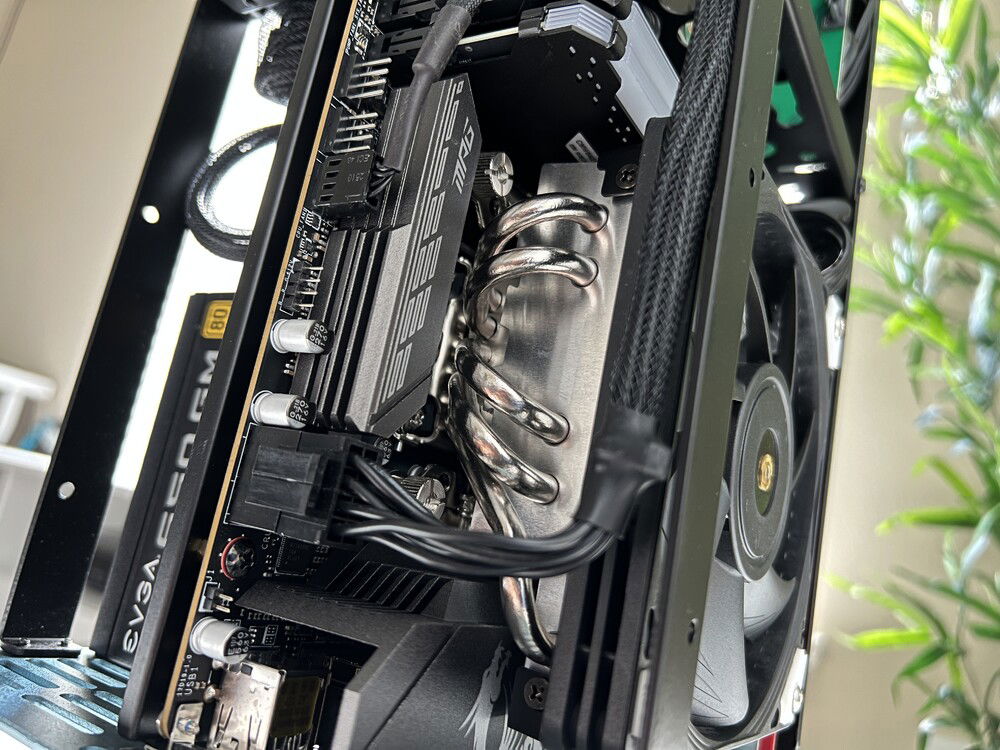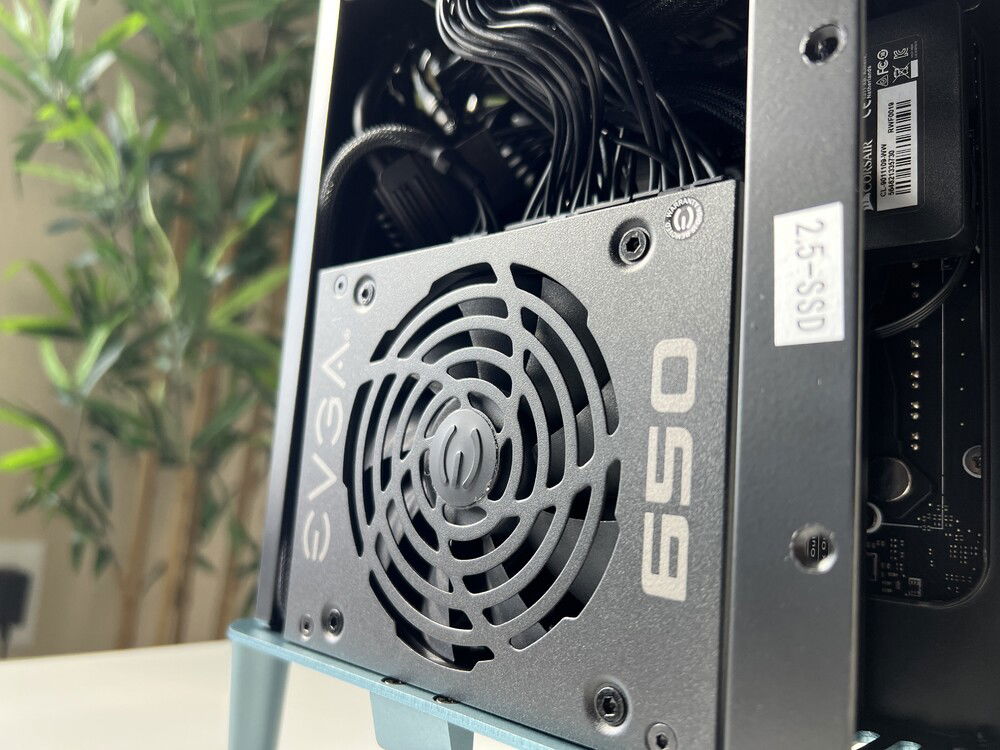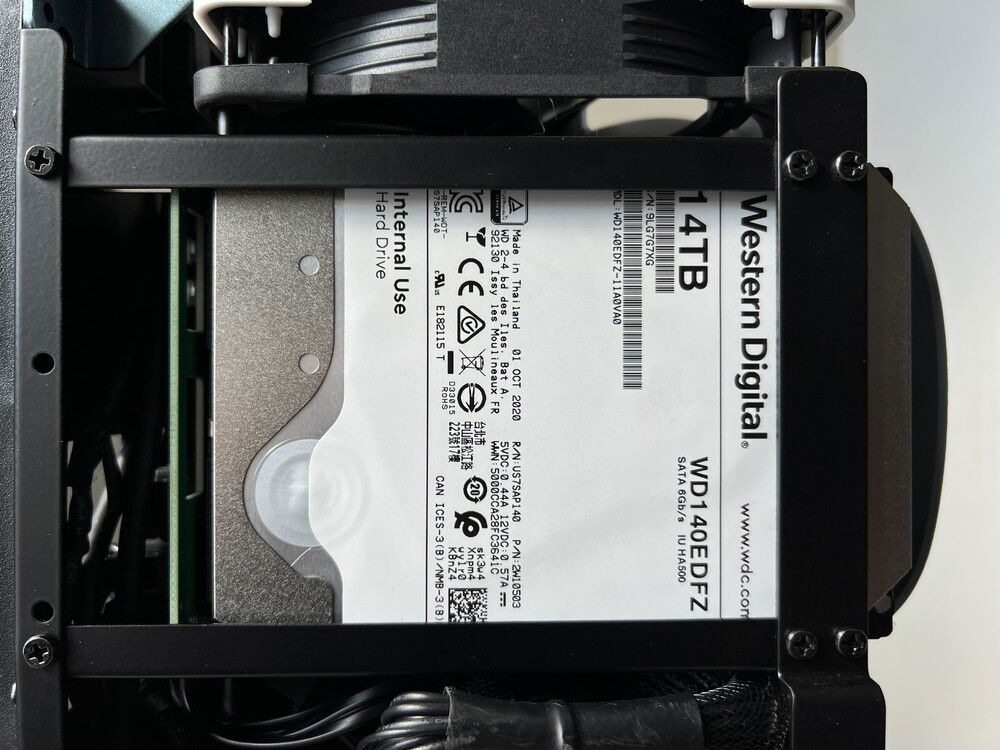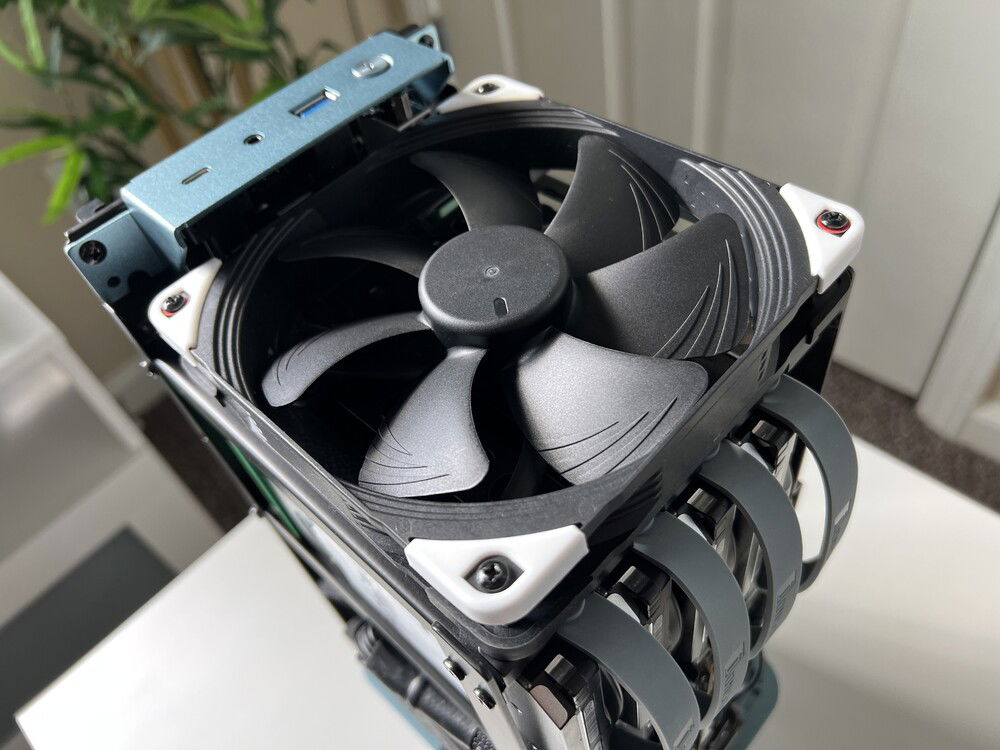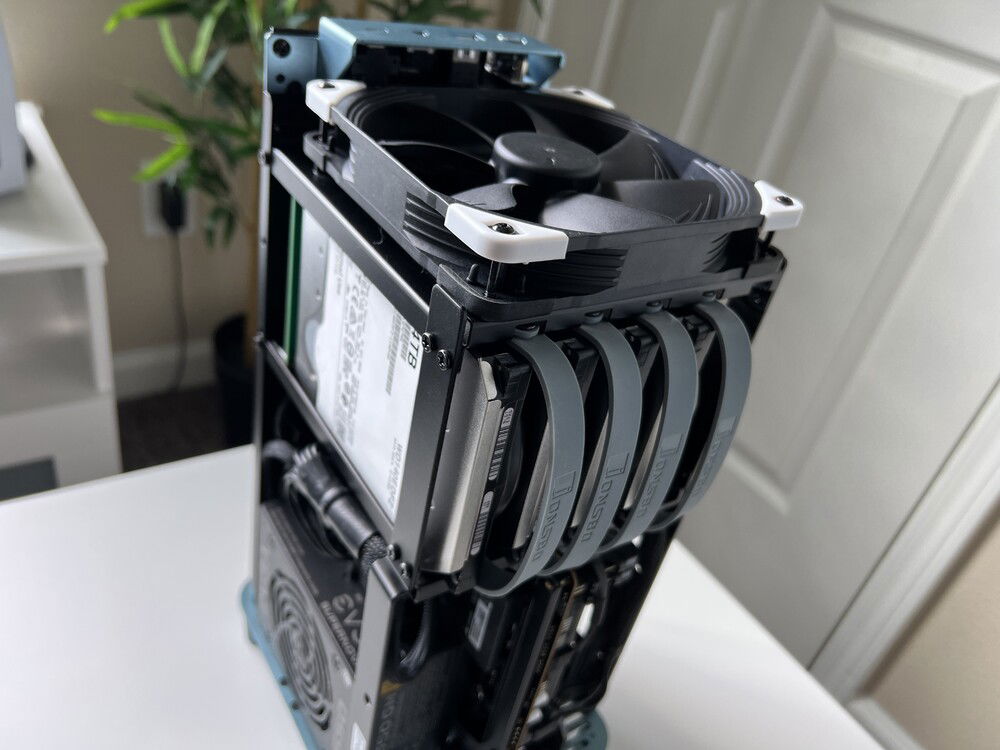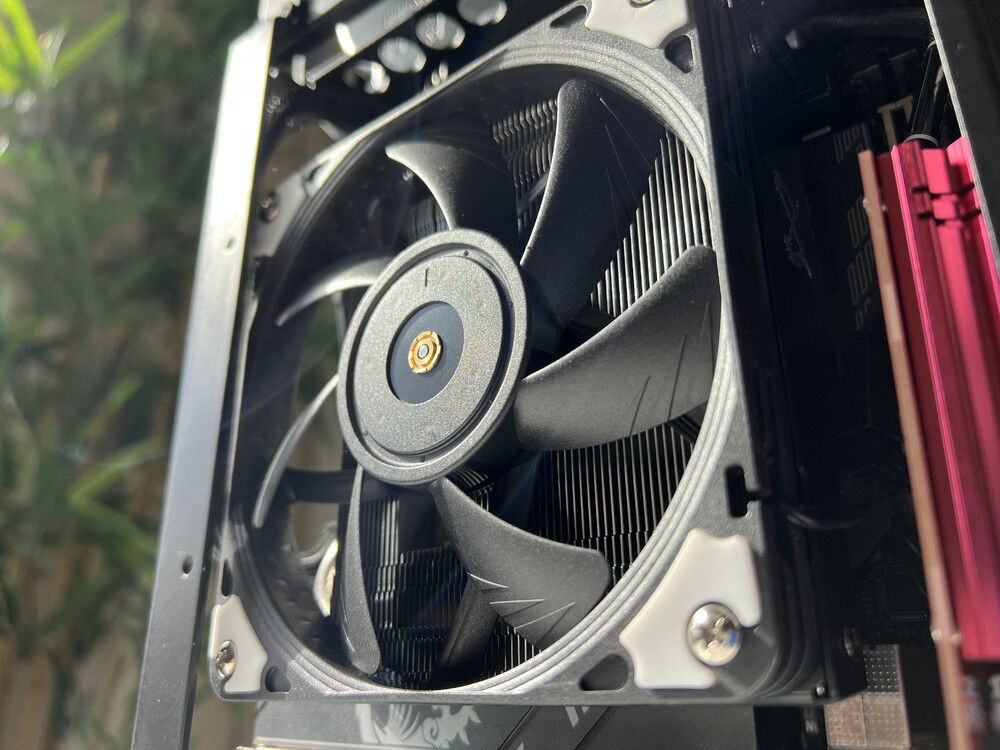Most Recent Build
Best Build
Luna S
Introduction
Luna S1 is an ITX, standard form factor computer based on the Intel B560 chipset and aims to be a powerful, compact and reliable multi-media virtualization server and network attached storage device. It was designed and built on the MSI MPG B560i motherboard. It is powered by a 10-core, 20-thread Intel Core i9-10900K with an all-core clock of 4.9GHz and a single core boost of 5.3GHz, useful for single core SMB transfers. It features 64GB of Corsair Vengeance RGB PRO DDR4 memory clocked at 3200MT/s with a memory latency of 14-14-14-34 with a memory bandwidth tune to improve VM and TrueNAS cache performance.
Storage
For the operating system, it uses a single Samsung 970 EVO Plus 256GB PCIE 3.0 NVMe SSD operating at 3.5GB/sec, a secondary 970 EVO Plus 1TB PCIE 3.0 NVMe SSD for cache and 56TB RAID-6 array composed of four 14TB 7200RPM Western Digital hard disk drives. I went with a RAID-6 configuration because it offers a very high fault tolerance and can be used in applications that require long-term data retention periods, such as archiving and surveillance. In addition, RAID-6 uses two different sets of parity calculations and can rebuild an array even with two simultaneous drive failures. RAID-6 requires at least 4 drives, with at least two for data and two for the parity information. Ultimately, RAID-6 is a good balance of capacity, redundancy and performance.
Airflow
Cooling is handled by a Scythe Big Shuriken 3, paired with a 120mm Noctua Chromax NF-A12x15 for the CPU, VRM and memory while the RAID-6 array is actively cooled by a single 140mm Noctua Chromax NF-A14. Cold air is taken in directly from the outside of the case through the perforated side panel to cool the CPU and is exhausted downwards. As for the storage, cold air is taken in through the top of the case, through the storage array and is then exhausted out of the bottom of the case following the flow of the fin stack direction of the CPU cooler. With this multi-chamber cooling setup for the various components, this allows the server to achieve a very efficient cooling profile and remain nearly silent, aside from periodic drive seeking noises.
Conclusion
Luna S1 aims to be a powerful, compact and efficient storage array and virtualization server designed for redundancy and portability.
Luna S1 is an ITX, standard form factor computer based on the Intel B560 chipset and aims to be a powerful, compact and reliable multi-media virtualization server and network attached storage device. It was designed and built on the MSI MPG B560i motherboard. It is powered by a 10-core, 20-thread Intel Core i9-10900K with an all-core clock of 4.9GHz and a single core boost of 5.3GHz, useful for single core SMB transfers. It features 64GB of Corsair Vengeance RGB PRO DDR4 memory clocked at 3200MT/s with a memory latency of 14-14-14-34 with a memory bandwidth tune to improve VM and TrueNAS cache performance.
Storage
For the operating system, it uses a single Samsung 970 EVO Plus 256GB PCIE 3.0 NVMe SSD operating at 3.5GB/sec, a secondary 970 EVO Plus 1TB PCIE 3.0 NVMe SSD for cache and 56TB RAID-6 array composed of four 14TB 7200RPM Western Digital hard disk drives. I went with a RAID-6 configuration because it offers a very high fault tolerance and can be used in applications that require long-term data retention periods, such as archiving and surveillance. In addition, RAID-6 uses two different sets of parity calculations and can rebuild an array even with two simultaneous drive failures. RAID-6 requires at least 4 drives, with at least two for data and two for the parity information. Ultimately, RAID-6 is a good balance of capacity, redundancy and performance.
Airflow
Cooling is handled by a Scythe Big Shuriken 3, paired with a 120mm Noctua Chromax NF-A12x15 for the CPU, VRM and memory while the RAID-6 array is actively cooled by a single 140mm Noctua Chromax NF-A14. Cold air is taken in directly from the outside of the case through the perforated side panel to cool the CPU and is exhausted downwards. As for the storage, cold air is taken in through the top of the case, through the storage array and is then exhausted out of the bottom of the case following the flow of the fin stack direction of the CPU cooler. With this multi-chamber cooling setup for the various components, this allows the server to achieve a very efficient cooling profile and remain nearly silent, aside from periodic drive seeking noises.
Conclusion
Luna S1 aims to be a powerful, compact and efficient storage array and virtualization server designed for redundancy and portability.
Color(s): Blue
RGB Lighting? Yes
Theme: Industrial
Cooling: Air Cooling
Size: Mini-ITX
Type: General Build
Hardware
CPU
$ 465.00
Motherboard
$ 270.00
Memory
$ 985.37
Graphics
Storage
$ 87.95
Storage
$ 194.00
Storage
Western Digital - WD Red Plus NAS (7200 RPM) (4x)
Form Factor: 3.5 Inch
Interface: SATA 6 Gb/s
Capacity: 14 TB
PSU
$ 299.99
Case Fan
$ 29.95
Case Fan
$ 28.95
Cooling
$ 45.42
Approved by:
